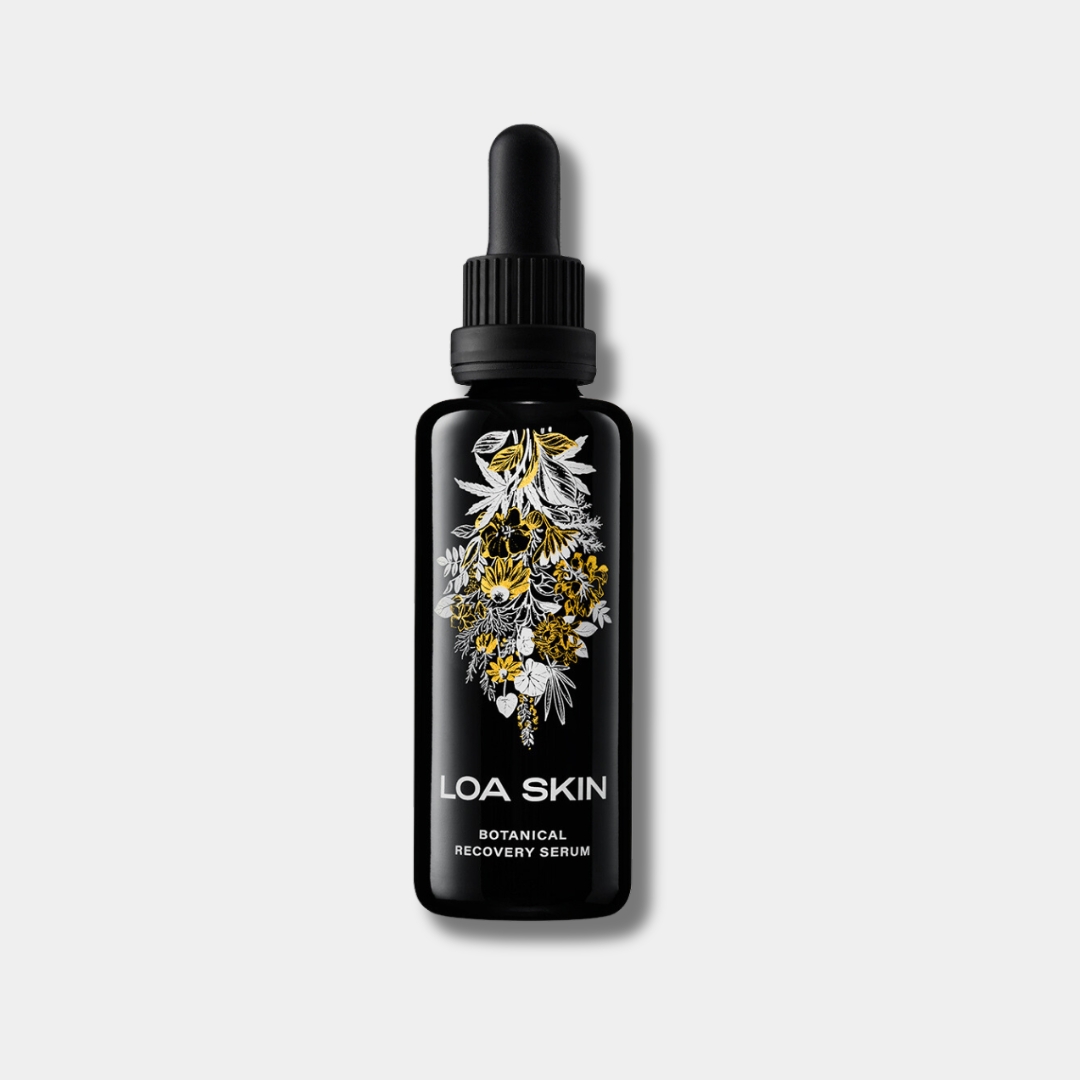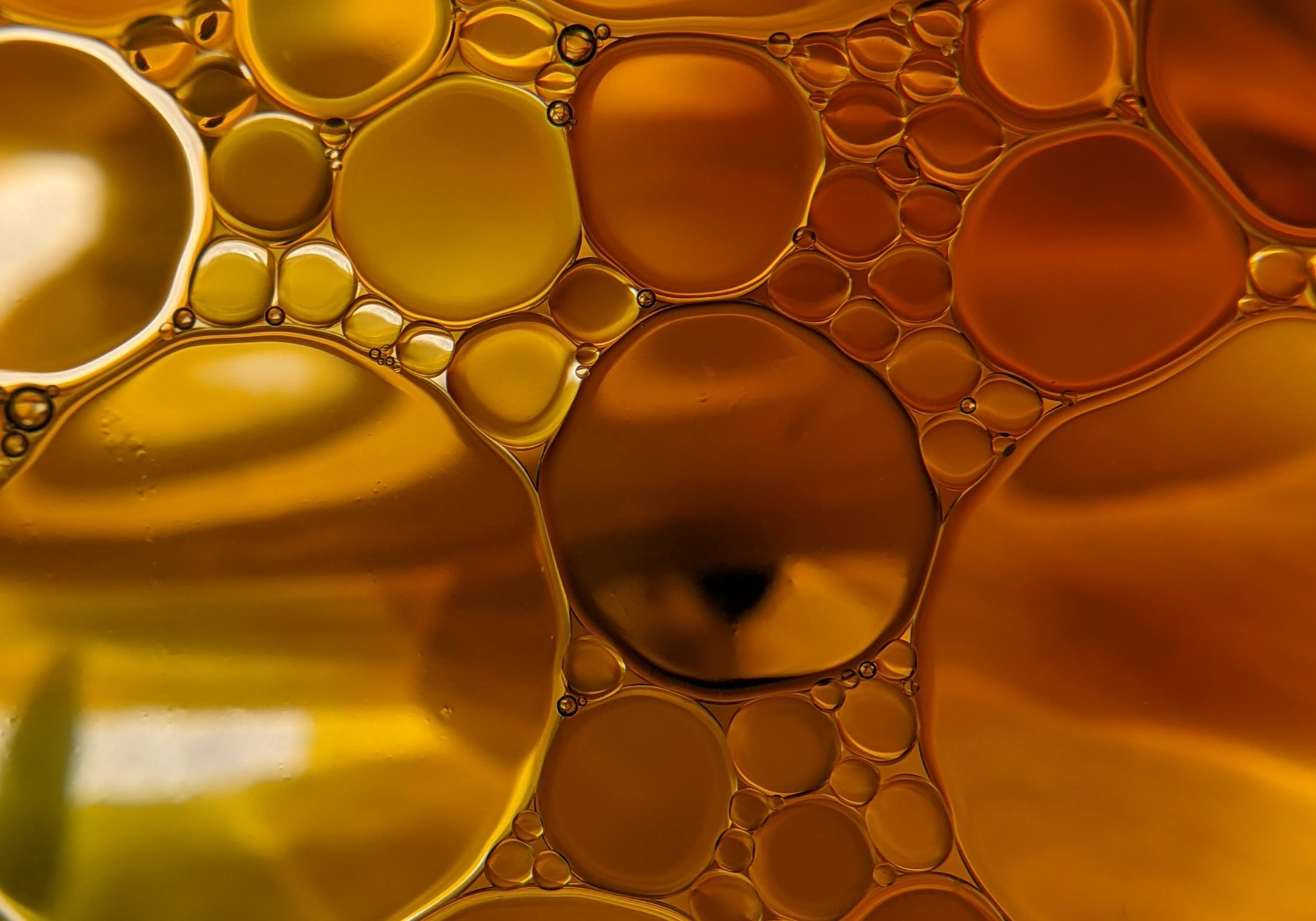
Evening Primrose Oil: Why It’s the Best Skin Moisturizer
You probably have a bottle of extra virgin olive oil in your kitchen, but have you heard of evening primrose oil? While it may not be as tasty on a salad as olive oil, It's one of the most effective skin moisturizers (we don’t suggest putting evening primrose on your salad though!).
How evening primrose oil benefits the skin

What is evening primrose oil?
Named evening primrose for its yellow flowers that bloom at sunset, Oenothera biennis has traditionally been used for healing bruises, cuts, and other skin inflammations. Native to North America, this yellow flowering plant can now be found in South America, Europe, and Asia.
For many different health benefits, evening primrose oil is extracted from the seeds and can be taken as a supplement or applied topically. Evening primrose is a non-comedogenic oil used in many skin care products for its moisturizing benefits due to its high concentration of GLA (gamma-linolenic acid), a rare omega-6 fatty acid that’s found in very few plant oils.
What is gamma-linolenic acid?
Firstly, what is gamma-linolenic acid? Is it the same as linoleic acid?
Linoleic acid and GLA are both omega-6 essential fatty acids, meaning that they are essential for human health. They’re classified as essential because our bodies cannot naturally produce them, and we require outside nutritional sources of omega-6s. Omega-6 fatty acids play a crucial role in brain function, and normal growth and development. While GLA is metabolized from linoleic acid, they are not exactly the same.
Due to our diets, genetics, and lifestyles, an imbalance of linoleic acid and GLA occurs often and can lead to body or skin inflammation. However, a balanced ratio can actually reduce inflammation. Therefore, increasing GLA levels to balance the linoleic acid to GLA ratio is important in reducing inflammation in the body and skin. This is where evening primrose oil comes in, as It’s one of the most researched sources of GLA—comprising 9-10% of its total weight.
The skin benefits of evening primrose oil
As one of the main ingredients of our Botanical Recovery Serum, we’re big fans of evening primrose oil over here at LOA SKIN. Let’s talk about why we love it and why we put it in our product.
1. Evening primrose oil is a great anti-inflammatory
Compared to other botanicals, evening primrose has one of the highest total phenolic contents and thereby antioxidant activities. Evening primrose seed oil contains bioactive compounds such as tocopherols, tocotrienols, phytosterols, and phenolic compounds that exhibit antioxidant activity. High antioxidant activity is beneficial for the body as they actively fight off free radicals and toxins that cause oxidative stress and inflammation. (Senapati, 2008).
Evening primrose oil’s high antioxidant activity, coupled with its high levels of GLA, help reduce inflammation by minimizing oxidative stress and inhibiting pro-inflammatory enzymes. Multiple studies have shown that evening primrose is effective against atopic dermatitis by providing a much needed boost in moisture and hydration, and a reduction in inflammation levels.
Atopic dermatitis (AD) is related to a deficiency of delta-6-desaturase, an enzyme responsible for converting linoleic acid to GLA (Chung et al., 2018). By introducing more GLA into the body via evening primrose oil over a 4 month period, participants found a significant improvement in their Eczema Area Severity Index (EASI) score (Chung et al., 2018).
2. Evening primrose oil can help with acne
While acne can be caused by many different issues (stress, hormones, diet, genetic skin issues, etc.), evening primrose oil has been shown in studies to help treat and prevent acne due to its hydrating and anti-inflammatory properties. This is mainly due to its high content of omega-6 essential fatty acids in the form of GLA. By reducing the level of inflammation in the hair follicles on the skin, it can help reduce the severity of acne lesions (Jung et. al, 2014). Not only does the hydration boost increase the rate of healing on the skin, but it can also strengthen the skin barrier to prevent further abrasions, irritation, and bacterial infection.
3. Evening primrose oil can prevent TEWL
When the skin’s lipid barrier is damaged or otherwise compromised, this can result in increased levels of transepidermal water loss (TEWL), meaning that the skin is not able to retain moisture as well as it usually does. As a result, this can lead to uncomfortable dehydrated and cracked skin, and even atopic eczema. Those with atopic eczema often have a reduced rate of conversion of the dietary essential fatty acids to their metabolites, leading to less incorporation of essential fatty acids into membrane phospholipids in the skin and increased TEWL (Horrobin, 2000).
A 2005 study conducted in Germany has shown that the regular intake of evening primrose oil with a high GLA content, strengthens the physiological skin barrier function, moisturizes, improves the biomechanical properties (elasticity, firmness, fatigue resistance) and smoothes the surface profile of skin. However, the study also observes that it did take longer than 4 weeks for results to be apparent (Muggli, 2005).
Precautions
While the topical application of evening primrose oil has little to no side effects, we always recommend patch-testing new products before facial application to mitigate any potential allergic reactions. Furthermore, studies have also shown that it can take up to 4 months of consistent usage before any results are apparent.
In terms of ingestion, evening primrose oil (dependent on dosage) can possibly interact with antidepressants, blood thinners, and high-blood pressure medications. If you have any concerns about incorporating evening primrose oil into your daily diet or skincare routine or have pre-existing medical conditions, we always recommend consulting your healthcare provider and a dermatologist.
References
Bordoni, A., Biagi, P. L., Masi, M., Ricci, G., Fanelli, C., Patrizi, A., & Ceccolini, E. (1988). Evening primrose oil (Efamol) in the treatment of children with atopic eczema. Drugs under experimental and clinical research, 14(4), 291–297.
Chung, B. Y., Park, S. Y., Jung, M. J., Kim, H. O., & Park, C. W. (2018). Effect of Evening Primrose Oil on Korean Patients With Mild Atopic Dermatitis: A Randomized, Double-Blinded, Placebo-Controlled Clinical Study. Annals of dermatology, 30(4), 409–416. https://doi.org/10.5021/ad.2018.30.4.409
Horrobin, D. F. (2000). Essential fatty acid metabolism and its modification in atopic eczema. The American Journal of Clinical Nutrition, 71(1). https://doi.org/10.1093/ajcn/71.1.367s
Jung, J., Kwon, H., Hong, J., Yoon, J., Park, M., Jang, M., & Suh, D. (2014). Effect of dietary supplementation with omega-3 fatty acid and gamma-linolenic acid on acne vulgaris: A randomised, double-blind, controlled trial. Acta Dermato Venereologica, 94(5), 521–525. https://doi.org/10.2340/00015555-1802
Muggli, R. (2005). Systemic evening primrose oil improves the biophysical skin parameters of healthy adults. International Journal of Cosmetic Science, 27(4), 243–249. https://doi.org/10.1111/j.1467-2494.2005.00274.x
Pająk, P., Socha, R., Broniek, J., Królikowska, K., & Fortuna, T. (2019). Antioxidant properties, phenolic and mineral composition of germinated Chia, golden flax, evening primrose, Phacelia and fenugreek. Food Chemistry, 275, 69–76. https://doi.org/10.1016/j.foodchem.2018.09.081
Park, K. Y., Ko, E. J., Kim, I. S., Li, K., Kim, B. J., Seo, S. J., Kim, M. N., & Hong, C. K. (2014). The effect of evening primrose oil for the prevention of xerotic cheilitis in acne patients being treated with isotretinoin: a pilot study. Annals of dermatology, 26(6), 706–712. https://doi.org/10.5021/ad.2014.26.6.706
Senapati, S., Banerjee, S., & Gangopadhyay, D. N. (2008). Evening primrose oil is effective in atopic dermatitis: a randomized placebo-controlled trial. Indian journal of dermatology, venereology and leprology, 74(5), 447–452. https://doi.org/10.4103/0378-6323.42645
Simon, D., Eng, P. A., Borelli, S., Kägi, R., Zimmermann, C., Zahner, C., Drewe, J., Hess, L., Ferrari, G., Lautenschlager, S., Wüthrich, B., & Schmid-Grendelmeier, P. (2014). Gamma-linolenic acid levels correlate with clinical efficacy of evening primrose oil in patients with atopic dermatitis. Advances in therapy, 31(2), 180–188. https://doi.org/10.1007/s12325-014-0093-0











Leave a comment
This site is protected by reCAPTCHA and the Google Privacy Policy and Terms of Service apply.